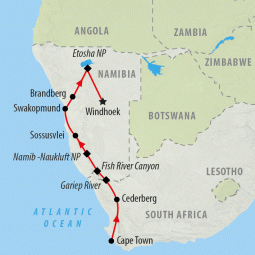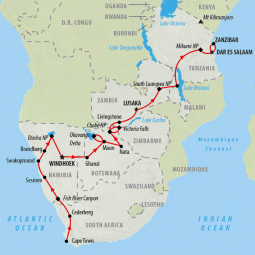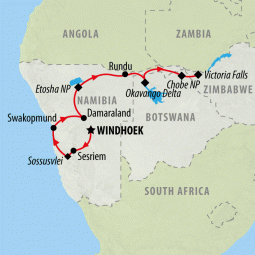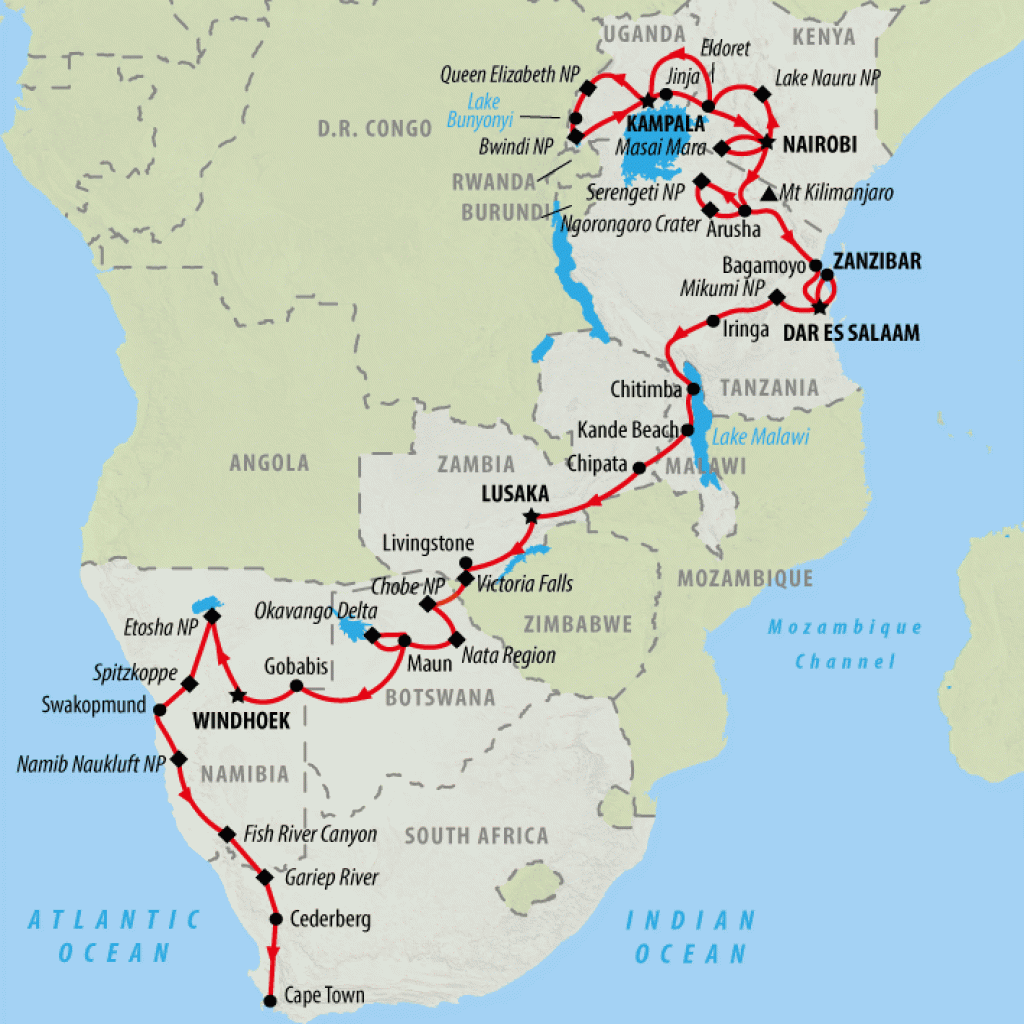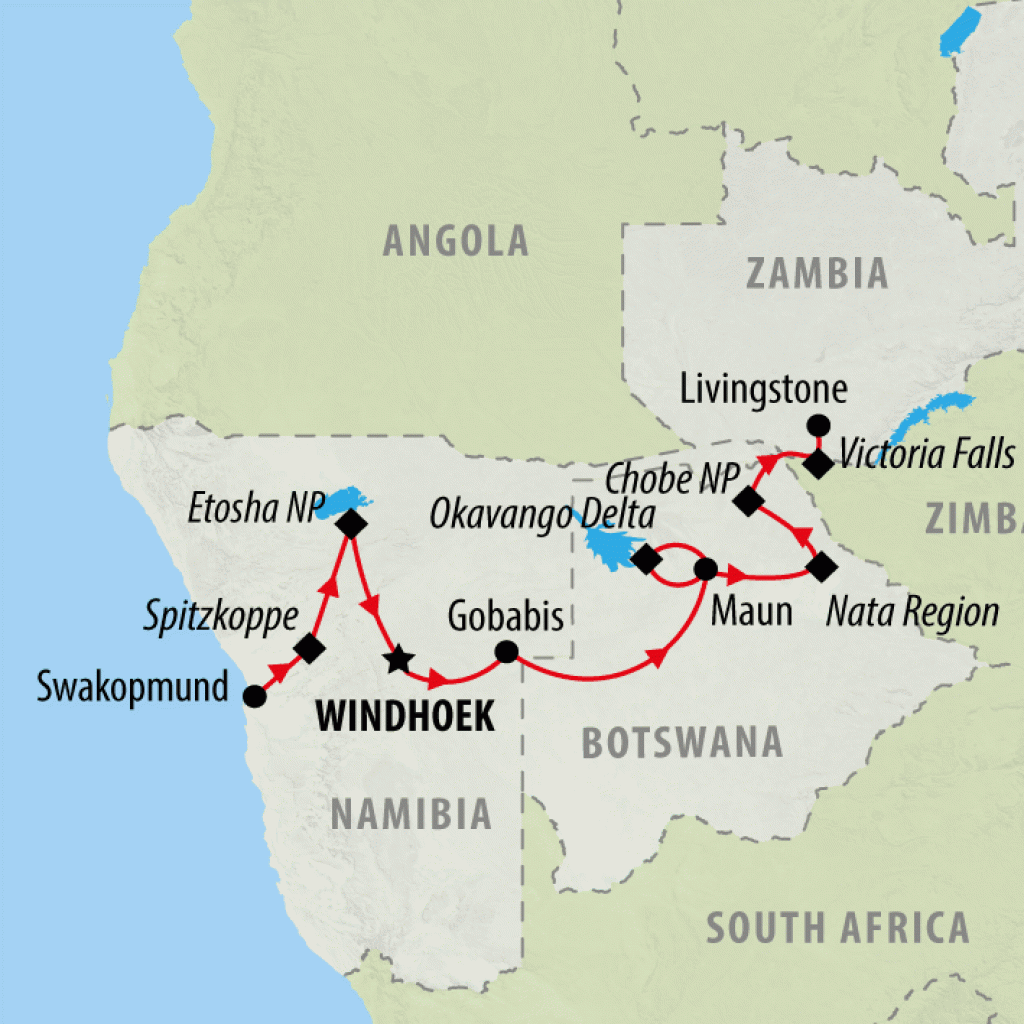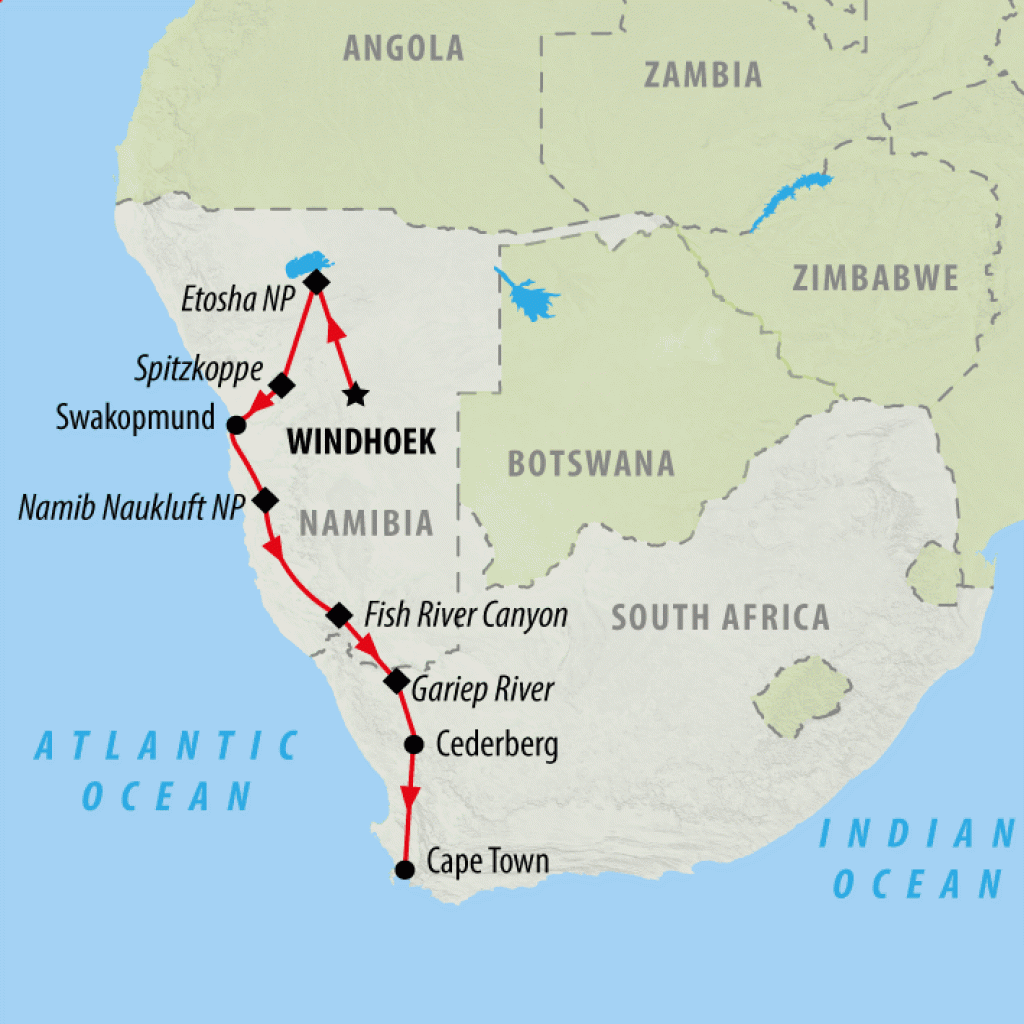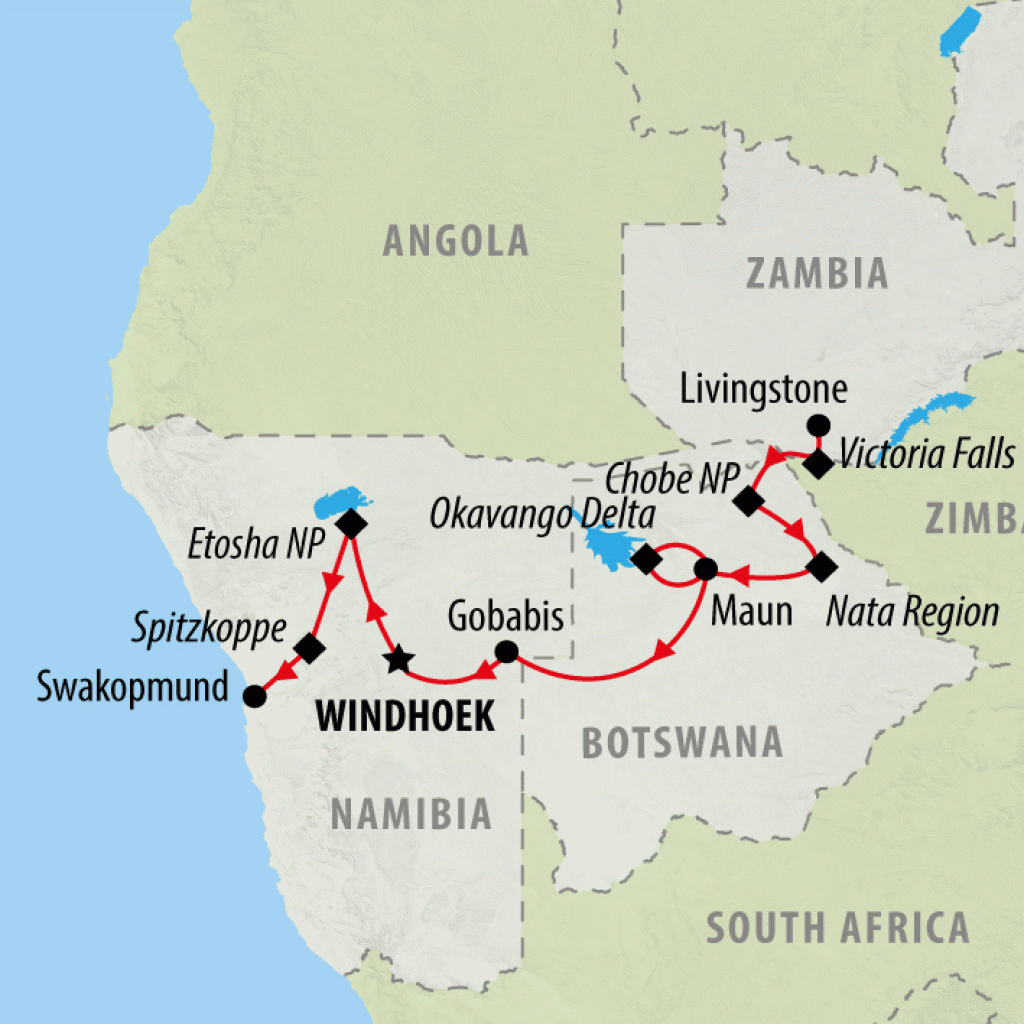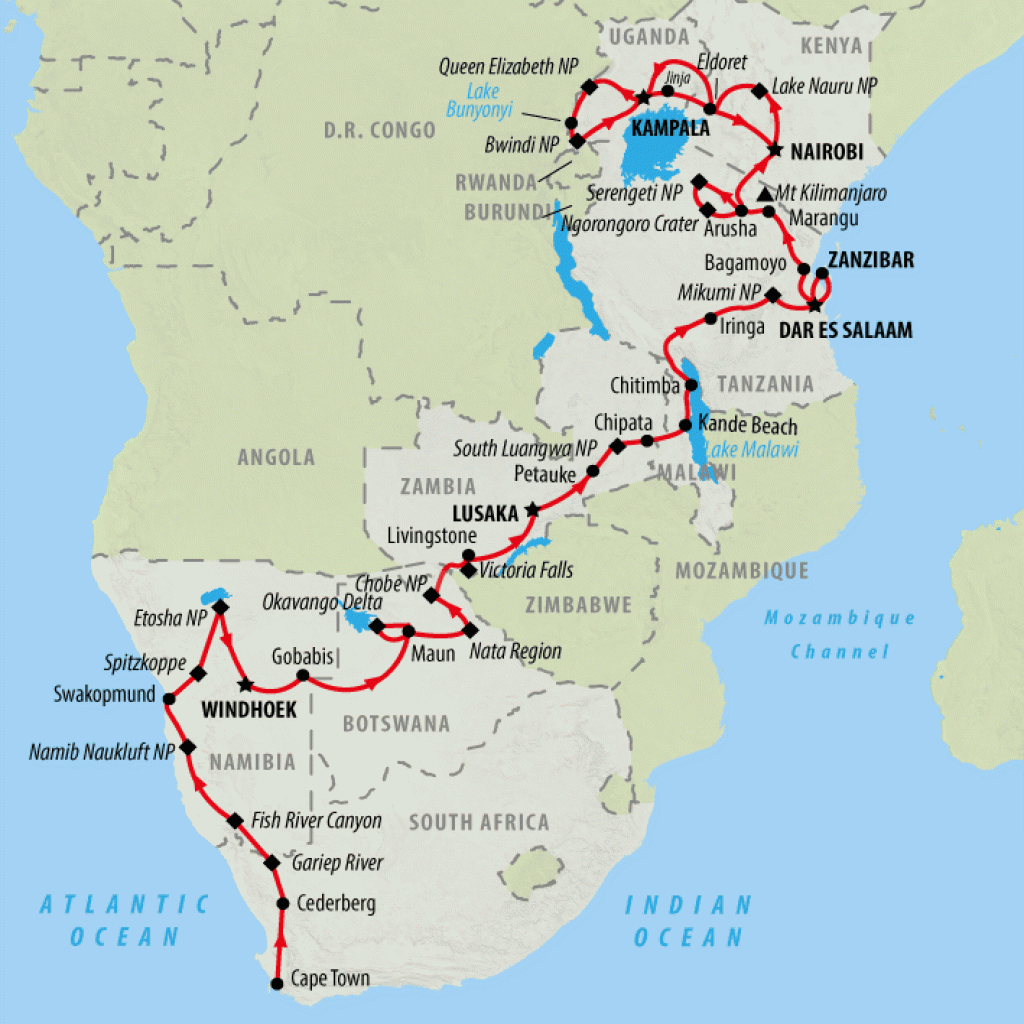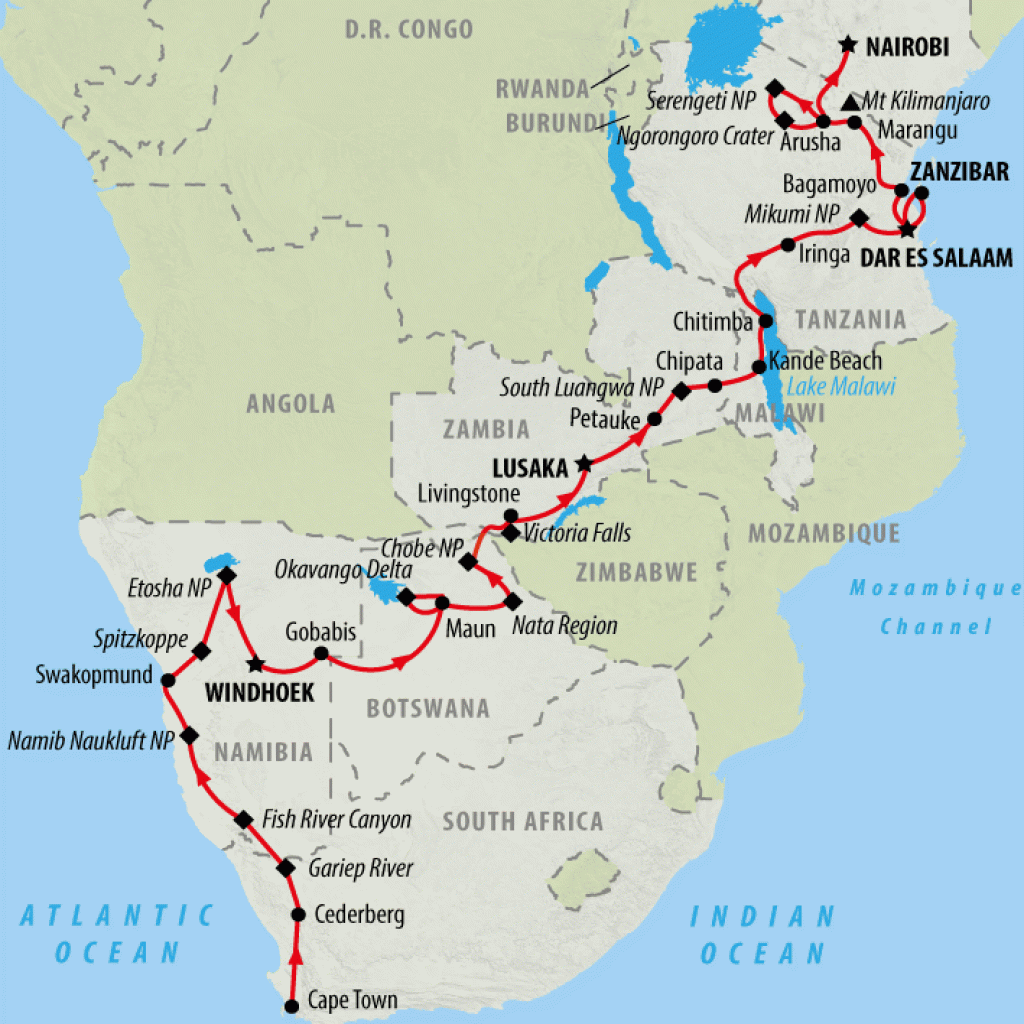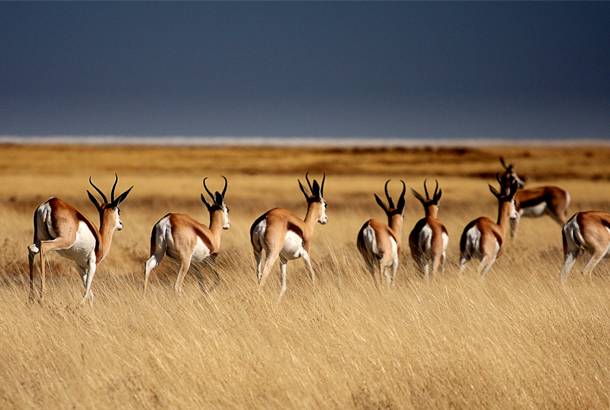
Namibia at a Glance: Best Time to Visit
Recommended time to visit: May - October. This is Namibia's dry season, characterised by mild, dry days.
Less popular time to visit: The wet season from November - April attracts fewer visitors, largely because the rain causes vegetation to grow, which can make wildlife harder to spot. Temperatures are also much hotter, but there are fewer crowds in parks such as Etosha.
Best time for wildlife: May - October sees animals gathering around the few remaining water sources and there is less vegetation to obscure the view. Although the parks will be busier than in the wet season, they won't feel too crowded. July - November is the best time to spot Southern right, humpback and Minke whales off the coast.
Best time for beaches: If you're heading to Swakopmund then there is very little chance of rain, whenever you travel. Temperatures are at their highest between January - June.
Climate | Windhoek
| Jan | Feb | Mar | Apr | May | Jun | Jul | Aug | Sep | Oct | Nov | Dec | |
|---|---|---|---|---|---|---|---|---|---|---|---|---|
| Temp Min °C | 17 | 16 | 15 | 13 | 9 | 7 | 6 | 8 | 12 | 15 | 15 | 17 |
| Temp Max °C | 29 | 28 | 27 | 25 | 22 | 20 | 20 | 23 | 25 | 29 | 29 | 30 |
| Rainfall (mm) | 76 | 74 | 79 | 41 | 8 | 0 | 0 | 0 | 3 | 10 | 23 | 48 |
Climate | Swakopmund
| Jan | Feb | Mar | Apr | May | Jun | Jul | Aug | Sep | Oct | Nov | Dec | |
|---|---|---|---|---|---|---|---|---|---|---|---|---|
| Temp Min °C | 15 | 16 | 15 | 13 | 11 | 9 | 8 | 8 | 9 | 11 | 12 | 14 |
| Temp Max °C | 23 | 23 | 23 | 24 | 23 | 23 | 21 | 20 | 19 | 19 | 22 | 23 |
| Rainfall (mm) | 0 | 5 | 8 | 3 | 3 | 0 | 0 | 3 | 0 | 0 | 0 | 0 |
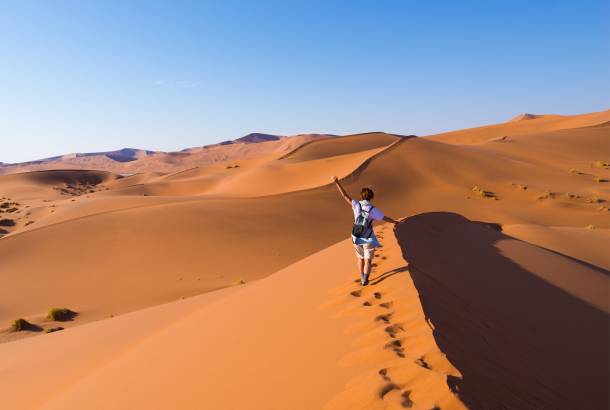
Festivals and Events
When you think of Namibia, images of rolling sand dunes and safaris probably come to mind, but there is a lot more to this exciting country than its dunes and wildlife. Festivals are an important part of the Namibian calendar and throughout the year there are a number of carnivals, sporting events and general merry-making activities. While many of Namibia’s festivals have colonial origins, they have almost all been adapted and modified to give them a distinct African flavour.
When is Namibia's Independence Day?
Liberated from South African rule in 1990, Namibia celebrates its freedom every year on March 21st with festivities all over the country, the most impressive of which can be found in Windhoek, the capital. A military parade passes through the city and is accompanied by sporting events, live music and general excitement. Independence Day is a national holiday and most businesses close for the day.
What is Windhoek Karneval?
By far the biggest cultural event in the Namibian calendar, the Windhoek Karneval, popularly referred to as WIKA, sees thousands of attendees from all over the country and beyond. Main features of the event include dance and music performances, street parades, a masked ball and, holding true to its Germanic roots, plenty of beer to quaff throughout the day. Meanwhile, the crowning of the new prince and princess of the carnival takes place and the new royals are symbolically charged with the fate of the city.
What is Namibia's Oktoberfest?
Believe it or not, Germany is not the only place where you can spend weeks on end swigging from steins of beer whilst flaunting a dirndl or lederhosen. One of the better relics of colonial rule, every year Namibia’s capital city erupts into beer and sausage-induced mayhem as they celebrate one of Germany’s best-loved traditions. Delicious local Namibian beers and a range of German delicacies will be on offer and there will plenty of games and events to take part in.
<Recommended tours
See Also
To help you plan your trip to Namibia, check out the following useful resources:
Best Places to Visit - National parks and more not to be missed
Tourist Visas - what you need to know prior to travelling to Namibia
Top Travel Tips - information about money, food and vaccinations
About Overland Safaris - what to expect on an overland expedition in Africa
About Lodge Safaris - all you need to know about lodge accommodated safaris
Safari Wildlife Guide - where to find Africa's most iconic wildlife
Best Place to see Rhino - our guide to the Big 5 and the best places to find them
